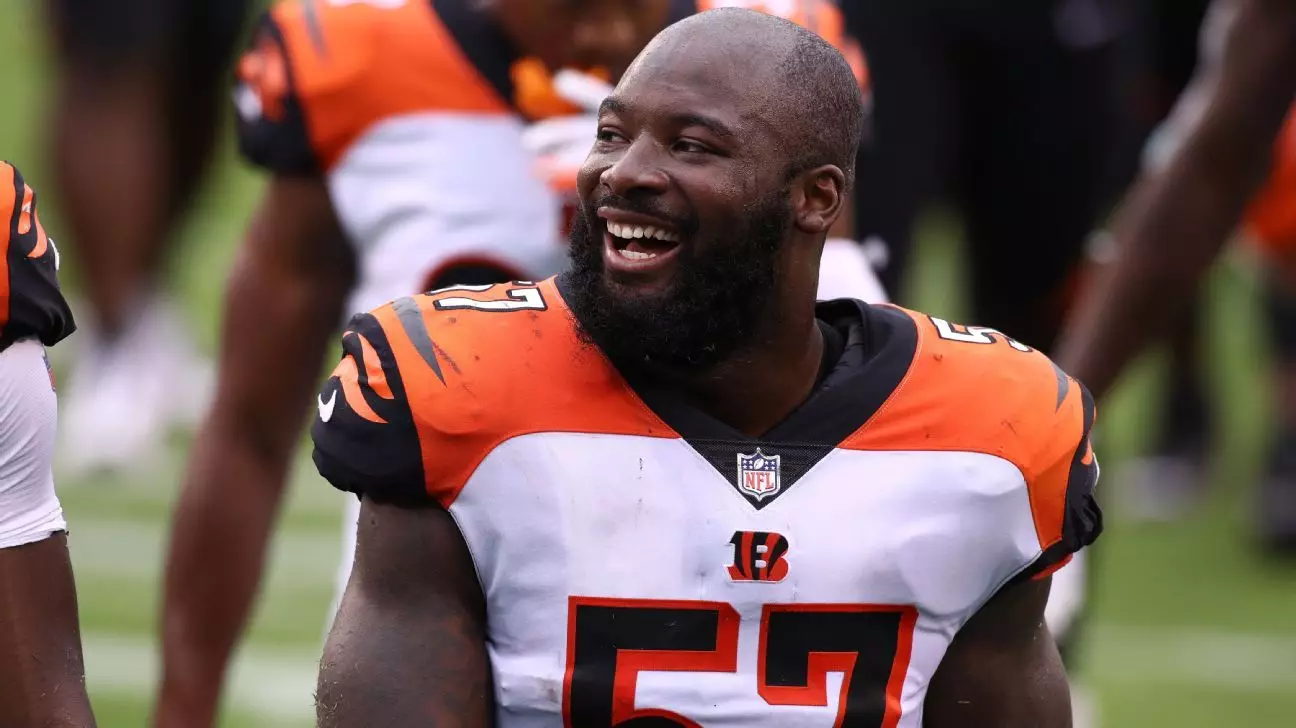The Cincinnati Bengals’ decision to part ways with linebacker Germaine Pratt marks not just the end of a player’s tenure but a pivotal shift within the organization. Pratt, who has served as a mainstay in the Bengals’ defense for six seasons, has been an integral part of the team’s journey, including back-to-back AFC North titles and championship appearances. However, recent moves by the franchise indicate a strategic pivot, seeking to invigorate a defense that has faltered in recent seasons. The implications of Pratt’s release extend beyond just team dynamics; they signify a commitment to evolving under pressure.
As a third-round pick out of North Carolina State, Pratt quickly established himself as a starting linebacker, a role he held in 88 of his 96 games. His journey from a rookie to a standout player was laden with challenges, yet he emerged as a key asset in one of the most competitive divisions in the NFL. However, this year, following the firing of defensive coordinator Lou Anarumo—who was subsequently appointed by the Indianapolis Colts—it became clear that Pratt’s future with the team was uncertain.
A Causal Chain of Events
The decision to release Pratt did not occur in isolation; it was the culmination of various events that transpired within the organization. The Bengals’ drafting of linebackers Demetrius Knight Jr. from South Carolina and Barrett Carter from Clemson during the recent draft signaled a shift in strategy. With organizations seeking to build a strong defensive unit, Pratt requesting a trade compounded the situation. His absence from voluntary workouts highlighted a disconnect with the team’s current direction.
Bengals coach Zac Taylor’s statements regarding Knight portray a sense of urgency and optimism about the new recruit’s potential. This expectation foreshadows the growing belief that the future of Cincinnati’s defense rests in fresh, youthful talent rather than relying on veteran players who might not align with the team’s evolving philosophy. Taylor’s enthusiasm speaks volumes about the organization’s commitment to fostering emerging talent, which could be crucial to regaining a competitive edge within the league.
Financial Considerations Amid Player Transition
From a financial perspective, the Bengals’ decision to release Pratt is equally strategic. The team will incur a $2.3 million dead cap charge due to the release, but they stand to save $5.9 million on the 2025 salary cap. In a league where financial flexibility is key to building a championship-contending squad, such decisions become crucial. The Bengals now have the ability to allocate those resources more effectively, investing in players who fit their long-term vision.
While fans may be saddened by the departure of a beloved player, it must be remembered that professional sports operate in a relentless cycle of change where adaptability leads to success. The Bengals appear poised to capitalize on the gap left by Pratt’s absence rather than merely filling it, showcasing their commitment to a more agile and strategic approach.
Legacy and Impact: Reflecting on Pratt’s Contributions
Pratt leaves behind a legacy that cannot be understated. His leadership on the field, especially during critical moments, forged a bond with the team’s core that propelled the Bengals through challenging matchups. With his career-high of 143 total tackles last season, alongside impactful performances that included two interceptions and key fumble recoveries, Pratt consistently demonstrated his value. Notably, his goal-line interception in the 2021 wild-card playoff win against the Las Vegas Raiders will go down as one of the most iconic plays in Bengals history, symbolizing the franchise’s resurgence after years of struggle.
Yet, despite Pratt’s individual brilliance, the team’s overall defensive performance was underwhelming, resulting in consecutive missed playoff appearances—much to the dismay of star players like quarterback Joe Burrow and wide receiver Ja’Marr Chase. In a sport where team synergy often dictates success, Pratt’s contributions fell short in the context of collective output, ultimately leading to an organizational reassessment.
The path forward for the Bengals may indeed be cloaked in uncertainty as they embark on this new chapter. Still, the release of Germaine Pratt opens the door for potential growth and rejuvenation—a chance for the team to reshape its identity and reclaim its competitive edge in the NFL.

